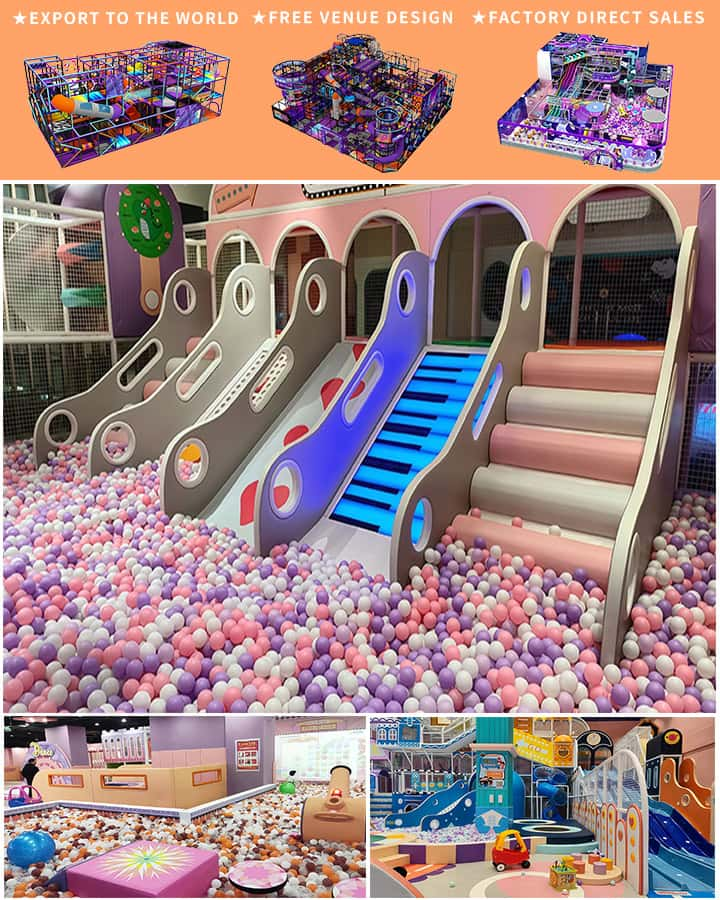Starting a children’s indoor playground can be an exciting venture. With the right planning and consideration, you can create a vibrant space where kids can play, learn, and grow. This comprehensive guide will outline key steps to help you successfully launch your indoor playground.
Research and Planning
Before diving into the physical setup of the playground, thorough research is essential. Understand the local demand by assessing demographics, competition, and market trends. Conduct surveys or focus groups with parents in your community to identify what they look for in an indoor play facility.
Business Plan Development
A solid business plan is vital for the success of your indoor playground. Outline your objectives, target market, budget, pricing structure, and marketing strategy. Consider potential revenue streams such as admission fees, membership packages, and birthday party hosting. Additionally, factor in costs for equipment, staffing, insurance, and maintenance.
Choosing the Right Location
 Selecting an appropriate location is crucial. Look for a spacious area with high ceilings to accommodate tall play structures. Ensure the venue has easy access, ample parking, and is situated in a safe neighborhood. The location should comply with local zoning laws and have sufficient amenities like restrooms and a kitchenette.
Selecting an appropriate location is crucial. Look for a spacious area with high ceilings to accommodate tall play structures. Ensure the venue has easy access, ample parking, and is situated in a safe neighborhood. The location should comply with local zoning laws and have sufficient amenities like restrooms and a kitchenette.
Designing the Play Area
The design phase involves creativity and safety considerations. Create distinct zones for various activities such as climbing structures, ball pits, slides, and interactive games. Incorporate soft flooring materials like foam mats or rubber tiles to prevent injuries from falls. Choose bright colors and themes that stimulate children’s imagination while ensuring all materials are non-toxic and easy to clean.
Safety Measures
Safety is paramount in an indoor playground. Install padded barriers around equipment, ensure proper ventilation, and maintain a child-to-staff ratio that allows for adequate supervision. Regularly inspect and maintain equipment to uphold safety standards. Have an emergency action plan in place, including first aid kits and clear exits.
Hiring Staff
Hiring friendly, responsible, and energetic staff is essential. Look for individuals with experience in childcare or related fields. Conduct thorough background checks and provide training on safety protocols, customer service, and conflict resolution. Your staff should be able to engage with children while ensuring their wellbeing.
Marketing and Community Engagement
Effective marketing will attract visitors to your playground. Develop a brand identity that resonates with children and parents alike. Utilize social media, local advertising, and partnerships with schools or daycare centers to spread the word. Offer promotional deals and host open houses to draw initial interest.
Opening Day Preparation
As opening day approaches, finalize all preparations. Ensure staff are briefed on operations, conduct a test run of all equipment, and prepare welcoming decorations. Engage with the local community through press releases or flyers to generate excitement about your new playground.
Ongoing Operations
Maintaining a successful indoor playground requires ongoing effort. Keep the facility clean and well-maintained, continually update equipment to keep it fresh and interesting, and seek feedback from visitors to make improvements. Regularly review your business plan to adapt to changing market demands.
By following these steps, you can start an indoor playground that provides joy and developmental benefits to children while offering a sustainable business opportunity. Remember, the key to success lies in meticulous planning, a commitment to safety, and creating an engaging environment for young minds to thrive.




